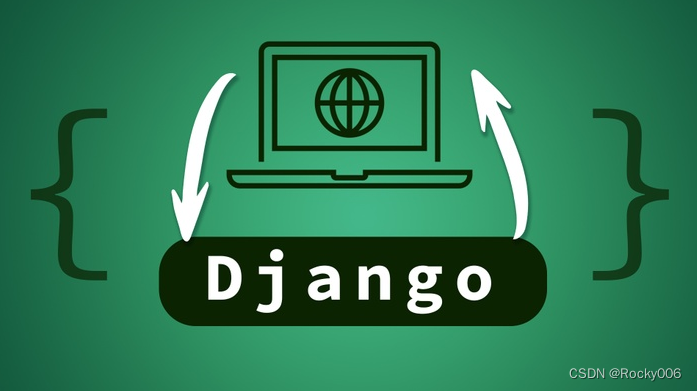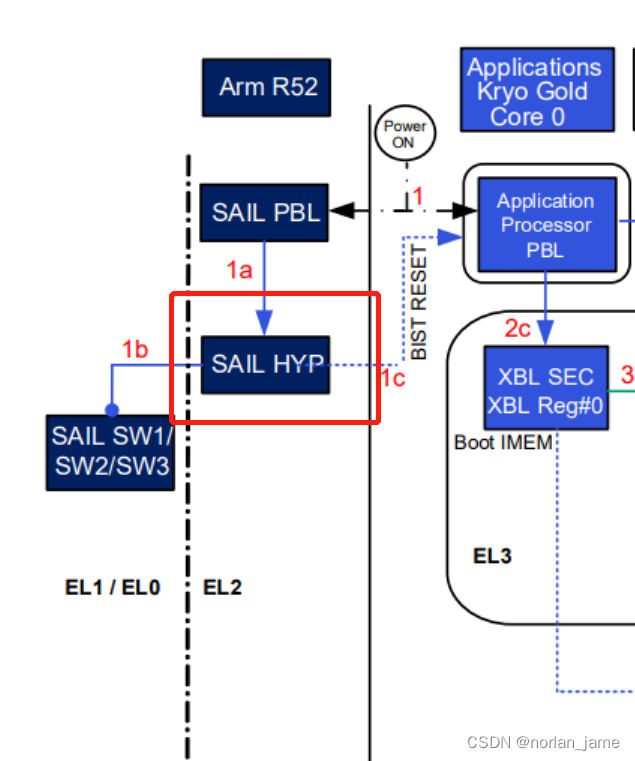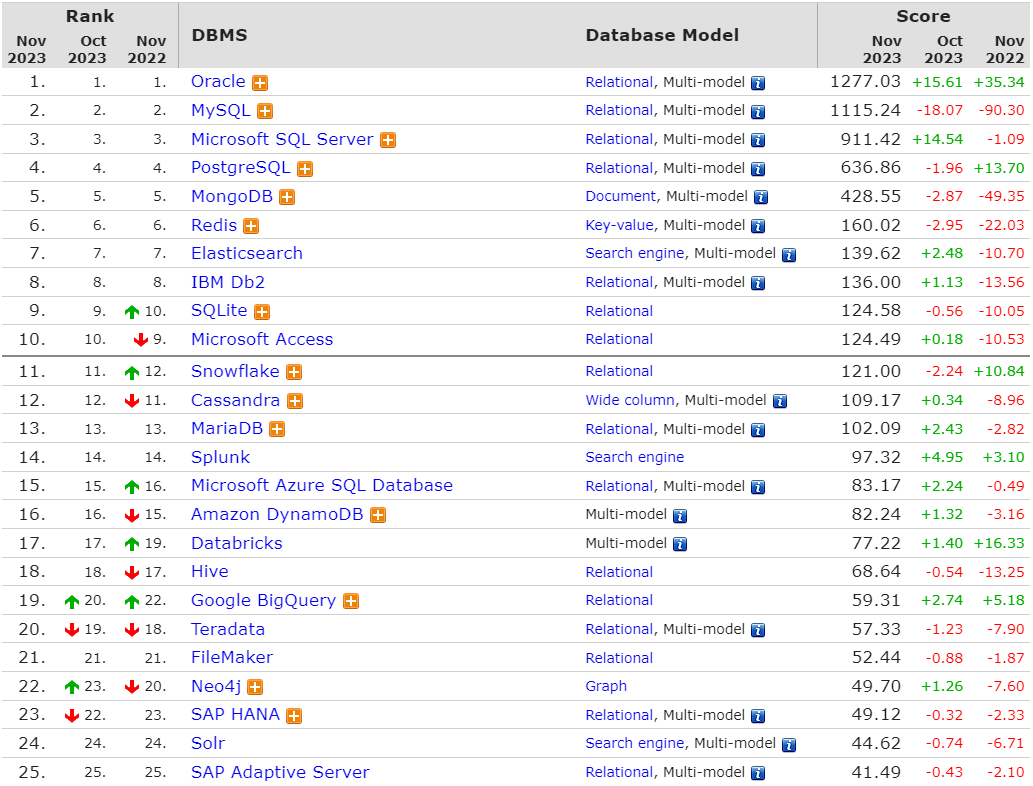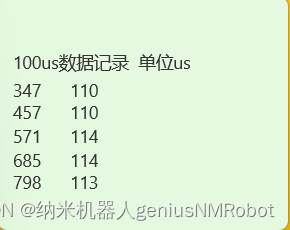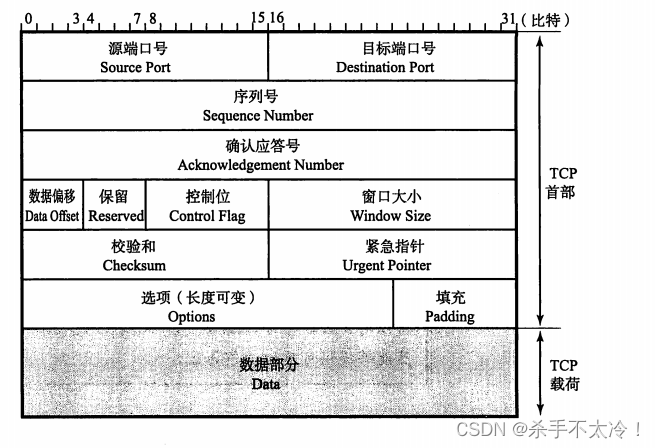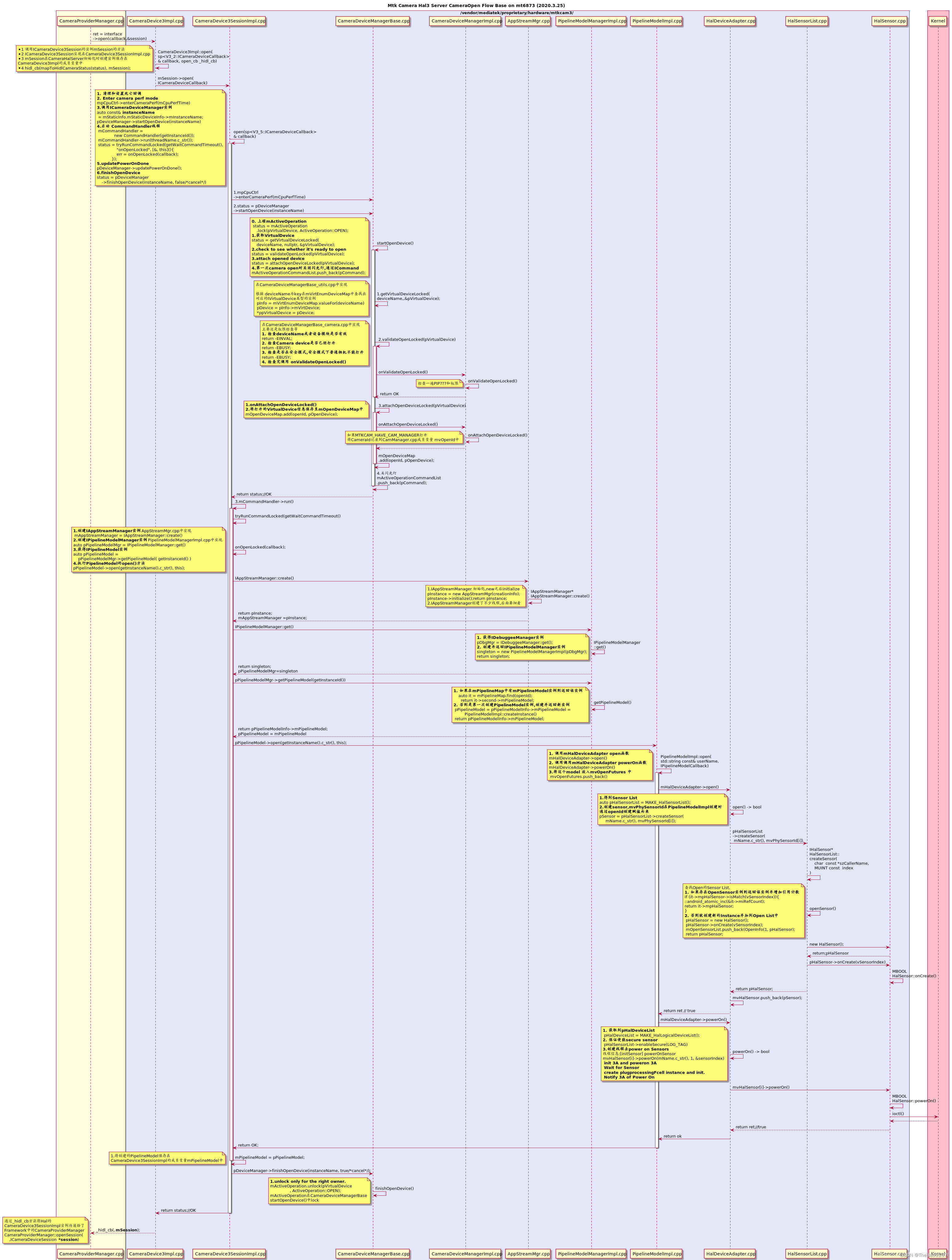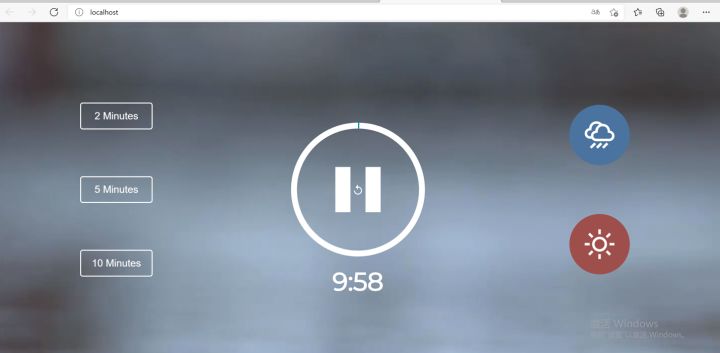【Liunx】DHCP服务
- DHCP概述
- A.安装dhcp
- B.查看配置文件
- C.修改配置文件
DHCP概述
- DHCP(Dynamic Host Configuration Protocol)i动态主机配置协议
- DHCP是由Internet工作任务小组设计开发的,专门用于为TCP/IP网络中的计算机自动分配TCP/IP参数的协议。
- 口使用DHCP服务的优势:
● 使用DHCP可以减少管理员的工作量,避免IP地址冲突,当网络更改IP地址网段时不
● 需要再重新配置每个用户的IP地址,提高了IP地址的利用率,方便客户端的配置。
- 资源规划
● 确定需要dhcp server分配的IP地址段、掩码、网关、DNS
- DHCP配置文件关键配置含义:
● subnet 192.168.200.0 netmask 255.255.255.0{ #subnet后跟子网网段,netmask后跟子网
掩码
● range 192.168.200.201192.168.200.250; #分配的IP地址起止范围
● ·option domain-name-servers 202.106.0.20; #DNS服务器地址(多个地址用","隔开)
● option routers 192.168.200.2; #默认网关
● default-lease-time 600; #最小租约600秒
● max-lease-time 7200; #最大租约36000秒
● }
A.安装dhcp
yum install -y dhcp

B.查看配置文件
rpm -qc dhcp

C.修改配置文件
vi /etc/dhcp/dhcpd.conf
修改内容如下
subnet 192.168.122.0 netmask 255.255.255.0 {range 192.168.122.125 192.168.122.135; option routers 192.168.3.254;optopm domain-name-servers 192.168.122.1;
}
subnet 192.168.3.0 netmask 255.255.255.0 {range 192.168.3.125 192.168.3.135; //分配网络段option routers 192.168.3.254; //网关optopm domain-name-servers 192.168.122.1;//DNS服务器地址
} //多个网段添加多个subnet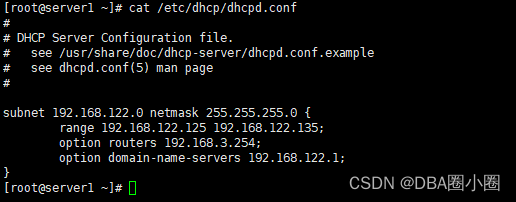
修改好后重启dhcp服务
systemctl restart dhcpd
点击这里查看【LIUNX如何查看网关】
查看配置文件模板
more /usr/share/doc/dhcp-server/dhcpd.conf.example
模板文件内容如下
# dhcpd.conf
#
# Sample configuration file for ISC dhcpd
## option definitions common to all supported networks...
option domain-name "example.org";
option domain-name-servers ns1.example.org, ns2.example.org;default-lease-time 600;
max-lease-time 7200;# Use this to enble / disable dynamic dns updates globally.
#ddns-update-style none;# If this DHCP server is the official DHCP server for the local
# network, the authoritative directive should be uncommented.
#authoritative;# Use this to send dhcp log messages to a different log file (you also
# have to hack syslog.conf to complete the redirection).
log-facility local7;# No service will be given on this subnet, but declaring it helps the
# DHCP server to understand the network topology.subnet 10.152.187.0 netmask 255.255.255.0 {
}# This is a very basic subnet declaration.subnet 10.254.239.0 netmask 255.255.255.224 {range 10.254.239.10 10.254.239.20;option routers rtr-239-0-1.example.org, rtr-239-0-2.example.org;
}# This declaration allows BOOTP clients to get dynamic addresses,
# which we don't really recommend.subnet 10.254.239.32 netmask 255.255.255.224 {range dynamic-bootp 10.254.239.40 10.254.239.60;option broadcast-address 10.254.239.31;option routers rtr-239-32-1.example.org;
}# A slightly different configuration for an internal subnet.
subnet 10.5.5.0 netmask 255.255.255.224 {range 10.5.5.26 10.5.5.30;option domain-name-servers ns1.internal.example.org;option domain-name "internal.example.org";option routers 10.5.5.1;option broadcast-address 10.5.5.31;default-lease-time 600;max-lease-time 7200;
}# Hosts which require special configuration options can be listed in
# host statements. If no address is specified, the address will be
# allocated dynamically (if possible), but the host-specific information
# will still come from the host declaration.host passacaglia {hardware ethernet 0:0:c0:5d:bd:95;filename "vmunix.passacaglia";server-name "toccata.example.com";
}# Fixed IP addresses can also be specified for hosts. These addresses
# should not also be listed as being available for dynamic assignment.
# Hosts for which fixed IP addresses have been specified can boot using
# BOOTP or DHCP. Hosts for which no fixed address is specified can only
# be booted with DHCP, unless there is an address range on the subnet
# to which a BOOTP client is connected which has the dynamic-bootp flag
# set.
host fantasia {hardware ethernet 08:00:07:26:c0:a5;fixed-address fantasia.example.com;
}# You can declare a class of clients and then do address allocation
# based on that. The example below shows a case where all clients
# in a certain class get addresses on the 10.17.224/24 subnet, and all
# other clients get addresses on the 10.0.29/24 subnet.class "foo" {match if substring (option vendor-class-identifier, 0, 4) = "SUNW";
}shared-network 224-29 {subnet 10.17.224.0 netmask 255.255.255.0 {option routers rtr-224.example.org;}subnet 10.0.29.0 netmask 255.255.255.0 {option routers rtr-29.example.org;}pool {allow members of "foo";range 10.17.224.10 10.17.224.250;}pool {deny members of "foo";range 10.0.29.10 10.0.29.230;}
}

